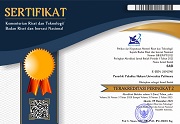Crime Settlement of Khalwat in Aceh
 )
)
(1) Faculty of Sharia Institut Agama Islam Negeri Lhokseumawe, Lhokseumawe, Indonesia
 Corresponding Author
Corresponding Author
Abstract
Introduction: Khalwat (Seclusion) is a despicable act that violates Islamic law because it leads to adultery. However, Qanun No. 6 of 2014 concerning Jinayat Law stipulates that the settlement of khalwat must go first through the Customary Court so that the punishment applied is not Islamic law punishment, such as ta`zir, but customary punishment.
Purposes of the Research: This study aims to analyze the mechanism for resolving the crime of seclusion in Aceh.
Methods of the Research: This is normative/doctrinal research using a statutory approach and a comparative approach.
Results of the Research: Khalwat is a crime (jarimah) that violates Islamic law and it is categorized into jarimah ta`zir. Settlement of jarimah seclusion can be carried out by litigation through the Syar'iyah Court and the settlement goes to customary courts. However, Article 24 of Qanun Number 6 of 2014 concerning Jinayat Law, stipulates that the settlement of criminal acts of seclusion must first be through customary courts. The settlement mechanism for khalwat is first resolved through customary courts using a deliberation-consensus approach like village meetings, it is usually called Gampong Customary Meetings (RAG) by executing customary punishments such as penalties of paying fines, feasting, bathing, and the khalwat couple is forced to get married. The consideration of implementing customary punishment is to solve the case more effectively and efficiently and in return can raise the level of trust and community compliance.
Keywords
DOI
10.47268/sasi.v28i4.1065
Published
2022-12-30
How To Cite
@article{SASI1065,
author = {Mahdi Syihab},
title = {Crime Settlement of Khalwat in Aceh},
journal = {SASI},
volume = {28},
number = {4},
year = {2022},
keywords = {Settlement; Application; Criminal Act; Seclusion},
abstract = {Introduction: Khalwat (Seclusion) is a despicable act that violates Islamic law because it leads to adultery. However, Qanun No. 6 of 2014 concerning Jinayat Law stipulates that the settlement of khalwat must go first through the Customary Court so that the punishment applied is not Islamic law punishment, such as ta`zir, but customary punishment.Purposes of the Research: This study aims to analyze the mechanism for resolving the crime of seclusion in Aceh.Methods of the Research: This is normative/doctrinal research using a statutory approach and a comparative approach.Results of the Research: Khalwat is a crime (jarimah) that violates Islamic law and it is categorized into jarimah ta`zir. Settlement of jarimah seclusion can be carried out by litigation through the Syar'iyah Court and the settlement goes to customary courts. However, Article 24 of Qanun Number 6 of 2014 concerning Jinayat Law, stipulates that the settlement of criminal acts of seclusion must first be through customary courts. The settlement mechanism for khalwat is first resolved through customary courts using a deliberation-consensus approach like village meetings, it is usually called Gampong Customary Meetings (RAG) by executing customary punishments such as penalties of paying fines, feasting, bathing, and the khalwat couple is forced to get married. The consideration of implementing customary punishment is to solve the case more effectively and efficiently and in return can raise the level of trust and community compliance.},
issn = {2614-2961}, pages = {578--588} doi = {10.47268/sasi.v28i4.1065},
url = {https://fhukum.unpatti.ac.id/jurnal/sasi/article/view/1065}
}
Journal Article
Badarulzaman, Muhammad Hafiz, Azhar Alias, Mohammad Azam Hussain, and Shuhairimi Bin Abdullah. “A Review on Legal Interpretation of Khalwat Under the Syariah.” Journal of Global Business and Sosial Entrepreneurship (GBSE) 2, no. 5 (2016): 44–54. http://doi.org/11.11020/gbse.v2i51.547.
Berutu, Ali Geno. “Qanun Aceh No. 14 Tahun 2003 Tentang Khalwat Dalam Pandangan FikIh Dan KUHP.” Muslim Heritage 1, no. 2 (2017): 87–106. https://doi.org/10.28918/jhi.v15i2.763.
Kurniawan. “The Dynamics of Formalization of Islamic Law In Indonesia.” KANUN : Jurnal Ilmu Hukum 14, no. 3 (2012): 423–47. 10.24815/kanun.v24i1.26659
Lesmana, Teddy. “Mediasi Penal Sebagai Alternatif Penyelesaian Perkara Pidana Dalam Perspektif Pembaharuan Sistem Peradilan Pidana Indonesia.” Jurnal Rechten : Riset Hukum Dan Hak Asasi Manusia 1, no. 1 (2019): 1–20. https://doi.org/10.52005/rechten.v1i1.1.
Mukhlis. “Keistimewaan Dan Kekhususan Aceh Dalam Perspektif Negara Kesatuan Republik Indonesia.” Jurnal Imu Hukum 4, no. 1 (2018): 79–90. http://dx.doi.org/10.30652/jih.v4i1.2092.
Muntaza. “Penyelesaian Kasus Khalwat Melalui Peradilan Adat Aceh.” Media Syari’ah : Wahana Kajian Hukum Islam Dan Pranata Sosial 19, no. 1 (2017): 159–94. http://dx.doi.org/10.22373/jms.v19i1.2019.
Rakib, Abdur. “Pergaulan Dalam Pertunangan Dan Khalwat : Studi Budaya Pertunangan Di Daerah Madura.” At-Turāṡ: Jurnal Studi Keislaman 6, no. 1 (2019): 23–45. http://doi.org/10.33650/at-turas.v6i1.547.
Rizki, Wahyu Fahrul. “Khalwat Marriage Adat and Practices in Aceh: A Study on Adat Sanctions and Settlement Process of Khalwat Case.” Asy-Syir’ah Jurnal Ilmu Syari’ah Dan Hukum 54, no. 2 (2020): 342–50. http://dx.doi.org/10.14421/ajish.2020.54.2.341-363 .
Rowe, Suzanne E. “Legal Research, Legal Analysis, and Legal Writing: Putting Law School into Practice.” SSRN ELibrary 1193, no. 2000 (2009): 1–19. http://dx.doi.org/10.2139/ssrn.1223682.
Suroto, Hari. “Perlakuan Hukum Yang Berbeda Bagi Pelaku Khalwat Antara Hukum Jinayat Dan Hukum Adat.” Jurnal Ilmiah Mahasiswa FISIP Unsyiah 5, no. 1 (2020): 1–12.
Book
Al-Asyqalani, Ibnu Hajar. Fathu Al-Bari. 9th ed. Riyadl: Darus Salam, 2000.
Al-Munawi, Abdurrouf. Faidul Qodir. 3rd ed. Kairo: Al-Maktabah At-Tijariah, n.d.
Al-Syaukani. Bustanul Akhbar Mukhtasar Nail Authar. Edited by Amir Hamzah Fachrudin. Jakarta: Pustaka Azam, 2006.
An-Nawawi, Imam. Al-Minhaj Syarah Shahih Muslim. Beirut: Dar al-Kutub al-’Ilmiyyah, 1991.
As-Suyuthi. Al-Asybah Wa Al-Nazair. Beirut: Dar al-Fikr, 1995.
Diantha, I Made Pasek. Metodologi Penelitian Hukum Normatif Dalam Justifikasi Teori Hukum. Jakarta: Prenanda Media Group, 2017.
Farhat, Yusof Syukri. Mu’jam Al-Tullab, (Dar Al-Kotob Al-Ilmiyah. Beirut: Dar al-Kotob al-Ilmiyah, 2001.
Feener, R. Michael. Shari’a and Social Engineering: The Implementation of Islamic Law in Contemporary Aceh Indonesia. Oxford: Oxford University Press, 2013.
Hendra, Dede. Eksistensi Penerapan Pidana Cambuk Terhadap Pelanggar Qanun Syariat Islam Di Provinsi Aceh. Depok: UI Press, 2012.
L, Ma’luf. Al-Munjid Fi Al-Adab Wa Al-‘Ulum. Beirut: Al Matba’ah al-Katulikiyah, 1986.
Muhammad, Rusjdi Ali. Revitalisasi Syariat Islam Di Aceh: Problem, Solusi Dan Implementasi. Jakarta: Logos Wacana Ilmu, 2013.
Muhammad Siddiq. Problematika Qanun Khalwat Analisis Terhadap Perspektif Mahasiswa Aceh. Banda Aceh: Aceh Justice Resorce Center (Ajrc), 2019.
Sulaiman, M. Isa. Historis Tentang Peradilan Adat Di Aceh, Dalam Pedoman Adat Aceh, Peradilan Dan Hukum Adat. Banda Aceh: Lembaga Adat Dan Kebudayaan Aceh (LAKA), Provinsi Nanggroe Aceh Darussalam, 2002.
Suyanta, Sri. Buku Pelaksanaan Panduan Syari’at Islam Untuk Remaja Dan Mahasiswa. Banda Aceh: Dinas Syari’at Islam Provinsi NAD, 2018.
Syahrizal. Hukum Adat Dan Hukum Islam Di Indonesia. Lhokseumawe: Nadiya Foundation, 2004.
Syukur, Fatilah A. Mediasi Penal: Penerapan Restorative Justice Di Pengadilan Anak Indonesia. Depok: Indie Publishing, 2011.
| Dublin Core | PKP Metadata Items | Metadata for this Document | |
| 1. | Title | Title of document | Crime Settlement of Khalwat in Aceh |
| 2. | Creator | Author's name, affiliation, country | Mahdi Abdullah Syihab; Faculty of Sharia Institut Agama Islam Negeri Lhokseumawe, Lhokseumawe; Indonesia |
| 3. | Subject | Discipline(s) | |
| 3. | Subject | Keyword(s) | Settlement; Application; Criminal Act; Seclusion |
| 4. | Description | Abstract | Introduction: Khalwat (Seclusion) is a despicable act that violates Islamic law because it leads to adultery. However, Qanun No. 6 of 2014 concerning Jinayat Law stipulates that the settlement of khalwat must go first through the Customary Court so that the punishment applied is not Islamic law punishment, such as ta`zir, but customary punishment.Purposes of the Research: This study aims to analyze the mechanism for resolving the crime of seclusion in Aceh.Methods of the Research: This is normative/doctrinal research using a statutory approach and a comparative approach.Results of the Research: Khalwat is a crime (jarimah) that violates Islamic law and it is categorized into jarimah ta`zir. Settlement of jarimah seclusion can be carried out by litigation through the Syar'iyah Court and the settlement goes to customary courts. However, Article 24 of Qanun Number 6 of 2014 concerning Jinayat Law, stipulates that the settlement of criminal acts of seclusion must first be through customary courts. The settlement mechanism for khalwat is first resolved through customary courts using a deliberation-consensus approach like village meetings, it is usually called Gampong Customary Meetings (RAG) by executing customary punishments such as penalties of paying fines, feasting, bathing, and the khalwat couple is forced to get married. The consideration of implementing customary punishment is to solve the case more effectively and efficiently and in return can raise the level of trust and community compliance. |
| 5. | Publisher | Organizing agency, location | Faculty of Law, Universitas Pattimura |
| 6. | Contributor | Sponsor(s) | Faculty of Sharia Institut Agama Islam Negeri Lhokseumawe, Lhokseumawe |
| 7. | Date | (YYYY-MM-DD) | 2022-12-30 |
| 8. | Type | Status & genre | Peer-reviewed Article |
| 8. | Type | Type | |
| 9. | Format | File format | |
| 10. | Identifier | Uniform Resource Identifier | https://fhukum.unpatti.ac.id/jurnal/sasi/article/view/1065 |
| 10. | Identifier | Digital Object Identifier | 10.47268/sasi.v28i4.1065 |
| 11. | Source | Title; vol., no. (year) | SASI; Volume 28 Issue 4, December 2022 |
| 12. | Language | English=en | en |
| 13. | Relation | Supp. Files |
CRIME SETTLEMENT OF KHALWAT IN ACEH (122KB) CRIME SETTLEMENT OF KHALWAT IN ACEH (122KB) |
| 14. | Coverage | Geo-spatial location, chronological period, research sample (gender, age, etc.) | |
| 15. | Rights | Copyright and permissions | Copyright: Authors who publish their manuscripts in this Journal agree to the following conditions: 1. The copyright in each article belongs to the author, as well as the right to patent. 2. Authors can enter into separate, additional contractual arrangements for the non-exclusive distribution of the journal's published version of the work (e.g., post it to an institutional repository or publish it in a book), with an acknowledgment of its initial publication in this journal. 3. Authors are permitted and encouraged to post their work online (e.g., in institutional repositories or on their website) before and during the submission process, as it can lead to productive exchanges, as well as earlier and greater citation of published work. 4. Authors have the right to self-archiving of the article (Author Self-Archiving Policy)
License: The SASI Journal is disseminated based on the Creative Commons Attribution-NonCommercial 4.0 International license terms. This license allows anyone to copy and redistribute this material in any form or format, compose, modify, and make derivatives of this material for any purpose. You cannot use this material for commercial purposes. You must specify an appropriate name, include a link to the license, and certify that any changes have been made. You can do this in a way that is appropriate but does not imply that the licensor supports you or your use.
|
Copyright (c) 2022 Mahdi Abdullah Syihab

This work is licensed under a Creative Commons Attribution-NonCommercial 4.0 International License.

 : 2479 times
: 2479 times Download : 1168 times
Download : 1168 times
















